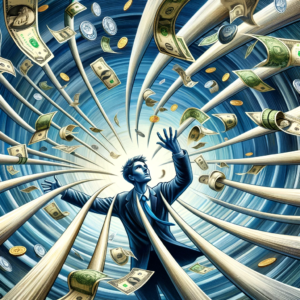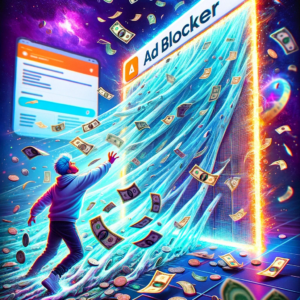In the age of social media, the allure of becoming an influencer is more tempting than ever. With the promise of fame, fortune, and a lifestyle full of glamorous events and products, it’s easy to see why so many aspire to this modern-day dream job. Unfortunately, the reality of making a living as an influencer is far from the glitzy images that flood our feeds. Here are ten reasons why relying solely on an influencer career might not be the financial panacea it appears to be.
1. Intellectual Property Risks
In the digital world, content is easily copied and repurposed without consent, leading to intellectual property risks for influencers. Protecting one’s content from unauthorized use or theft is a constant concern, and legal battles to defend intellectual property can be costly and time-consuming.
Influencers often collaborate with brands and other creators, which can lead to disputes over ownership and rights to content. These challenges can detract from creative efforts and potentially lead to financial losses, further complicating the influencer’s ability to sustain a stable income.
2. Vulnerability to Public Scrutiny
Influencers live under the microscope of public scrutiny, where every post, tweet, or comment can be analyzed and critiqued. This exposure leaves them vulnerable to public backlash, which can occur even from seemingly innocuous content.
A single misstep or controversial statement can lead to a rapid decline in followers and partnerships, effectively jeopardizing their income. The pressure to maintain a flawless public image while being relatable and genuine is a tightrope walk that many find unsustainable in the long run.
3. Legal and Financial Complexities
Navigating the legal and financial aspects of influencer work can be complex. Contracts, copyright laws, disclosure requirements, and taxes are just a few of the areas where influencers must be savvy. Missteps in any of these areas can lead to legal trouble or financial penalties, adding stress and potential costs to the influencer lifestyle.
4. The Pressure to Stay Relevant
The pressure to remain relevant in the fast-paced world of social media is intense. Influencers must continuously produce fresh, engaging content to keep their audience interested and attract new followers. This constant demand can lead to burnout and a decline in content quality, which can alienate followers and deter potential brand partnerships, ultimately affecting an influencer’s ability to earn.
5. High Operational Costs
Behind the glamorous photos and videos lies the reality of high operational costs. High-quality content production involves expenses such as photography equipment, editing software, travel, and sometimes even hiring a team. Without substantial and consistent income, these costs can quickly become a financial burden, making it difficult for influencers to profit from their efforts.
6. Limited Brand Deals
Not all influencers are flooded with lucrative brand deals. Competition for brand partnerships is fierce, and companies are becoming more selective in choosing influencers who align with their values and target audience. As a result, many influencers find themselves with limited opportunities to collaborate with brands, restricting their primary revenue stream.
7. The Need for Diverse Income Streams
Reliance on a single income source is risky in any profession, and influencing is no exception. Successful influencers often diversify their income through methods such as merchandise sales, Patreon accounts, or YouTube AdSense. However, developing these additional revenue streams requires time, investment, and a loyal fan base, which many influencers struggle to achieve.
8. Audience Fatigue
With the sheer volume of content being produced, audiences can experience fatigue, leading to disengagement. When followers start to tune out, the influencer’s value to brands diminishes, resulting in fewer partnerships and sponsored content opportunities. Maintaining an engaged audience in a crowded market is a constant challenge that directly affects an influencer’s earning potential.
9. The Impact of Ad Blockers
The increasing use of ad blockers poses a significant challenge for influencers, particularly those who rely on platform-generated revenue like YouTube AdSense. With a substantial portion of the audience blocking ads, the potential earnings from views and clicks drastically decrease, making it harder for influencers to monetize their content effectively.
10. Longevity and Career Progression
The influencer career path is notoriously short-lived. What’s trendy today can quickly become passé, and maintaining influencer status over the long term is exceptionally challenging. As influencers age or their life circumstances change, their appeal to certain audiences and brands may wane. In the end, that usually leads to a decrease in opportunities and income.
The Realities of Being an Influencer
While influencing can be a lucrative career for a select few, it’s fraught with financial instability and challenges for the majority. The dream of turning likes into a steady income is often just that—a dream. For those considering this path, it’s crucial to understand the realities of the industry, plan for financial instability, and explore diverse income streams to ensure a sustainable career.
Catherine is a tech-savvy writer who has focused on the personal finance space for more than eight years. She has a Bachelor’s in Information Technology and enjoys showcasing how tech can simplify everyday personal finance tasks like budgeting, spending tracking, and planning for the future. Additionally, she’s explored the ins and outs of the world of side hustles and loves to share what she’s learned along the way. When she’s not working, you can find her relaxing at home in the Pacific Northwest with her two cats or enjoying a cup of coffee at her neighborhood cafe.













Leave a Reply